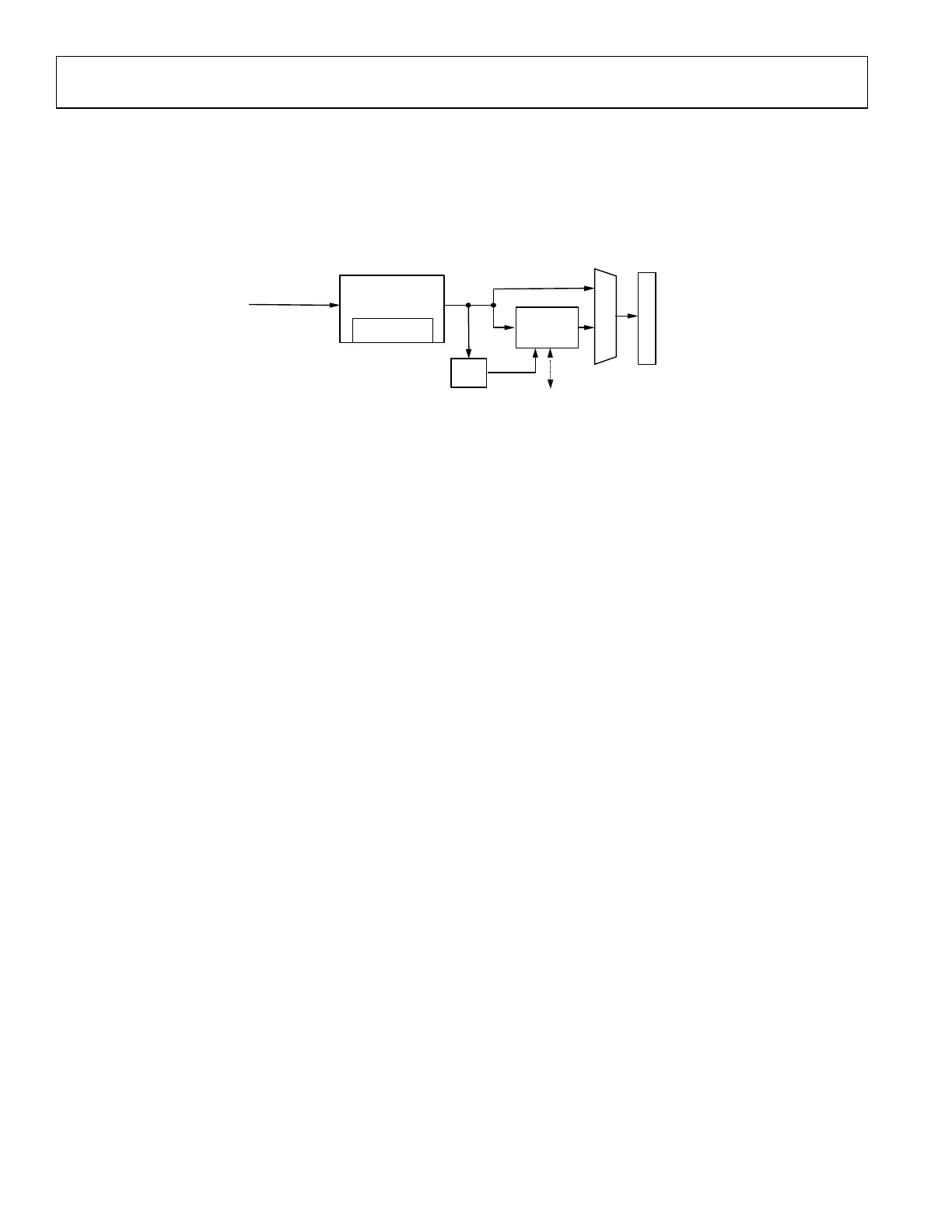UG-1828 Preliminary Technical Data
Rev. PrB | Page 178 of 277
ADRV9001 DPD SUPPORTED WAVEFORMS
The integrated DPD supports NB waveforms such as TETRA. Note some NB standard waveforms such as Direct Modulation types with
constant envelope do not require DPD. The different modes of operation for TETRA are listed in Table 75. The integrated DPD supports
all TETRA 1 and 2 modes.
Table 75. Supported NB Standards and Associated Operational Parameters
Standard Bandwidth (kHz) Modulation Number of Carriers PAR (dB) before CFR
TETRA1 25 DQPSK 1 3.1
TETRA2 25 4 QAM 8 9.6
TETRA2 25 16 QAM 8 9.5
TETRA2 25 64 QAM 8 10.3
TETRA2 50 4 QAM 16 10.2
TETRA2 50 16 QAM 16 10.3
TETRA2 50 64 QAM 16 10
TETRA2 100 64 QAM 32 11.2
TETRA2 150 64 QAM 48 10.8
Besides that, the integrated DPD also supports some WB LTE and LTE-like waveforms with their associated operational parameters.
Other WB waveforms can be supported if the power amplifier behavior fits the designed hardwired amplifier model, as well as the
sampling rates and transceiver bandwidth.
The WB LTE standards supported and their associated operation parameters are summarized in Table 76.
Table 76. Supported WB Standards and Associated Operational Parameters
LTE Bandwidth (MHz) Number of Carriers PAR (dB) Before CFR
1.4 Multicarrier ~11
3 Multicarrier ~11
5 Multicarrier ~11
10 Multicarrier ~11
15 Multicarrier ~11
20 Multicarrier ~11
As shown in Table 75 and Table 76., multicarrier TETRA2 has a Peak-to-Average Ratio (PAR) between 9.6 dB to 11.2 dB and multi-
carrier LTE signal typically has a PAR of about 11dB. To achieve higher power amplifier efficiency and DPD algorithm stability, a
waveform with a large PAR is expected to have crest factor reduction (CFR) performed in baseband processor before DPD operation. It
is important that CFR is applied to a multicarrier signal before transmission since it keeps the average power higher while maintaining
the same peak back off in the digital transmit data. Also, CFR suppresses large peaks to below a preset threshold therefore eliminating
occasional large peaks that could make DPD unstable if the peak is beyond the compression threshold limit of the power amplifier. For
example, an LTE signal has a PAR of about 11 dB and the PAR can be reduced by CFR to be about 7 dB by trading off EVM. Note it is
the responsibility of baseband processor to perform CFR with an appropriate tradeoff between PAR reduction and EVM degradation
before sending the transmit data to ADRV9001. It should be also noted that additional EVM degradation caused by the integrated DPD
is negligible compared to the degradation caused by CFR.
ADRV9001 DPD PERFORMANCE
The integrated DPD algorithm has been tested using MOS type of power amplifiers. Figure 169 and Figure 170 shows the AM-AM and
AM-PM performance of the raw transmit signal input versus the power amplifier output before and after DPD. The test waveform is
TETRA1. From Figure 170, it can be seen clearly that the power amplifier nonlinearity is successfully corrected by the integrated DPD.

